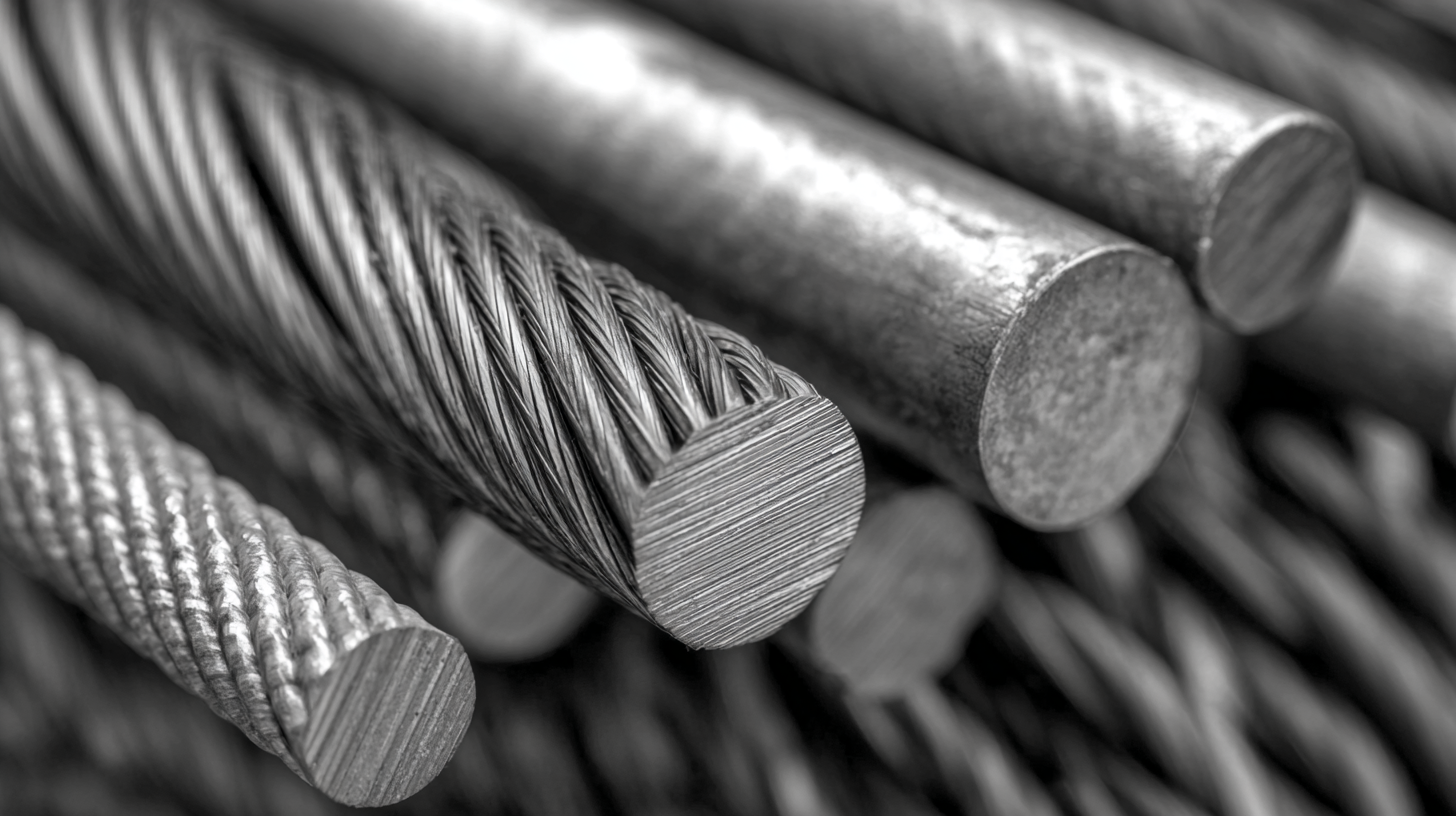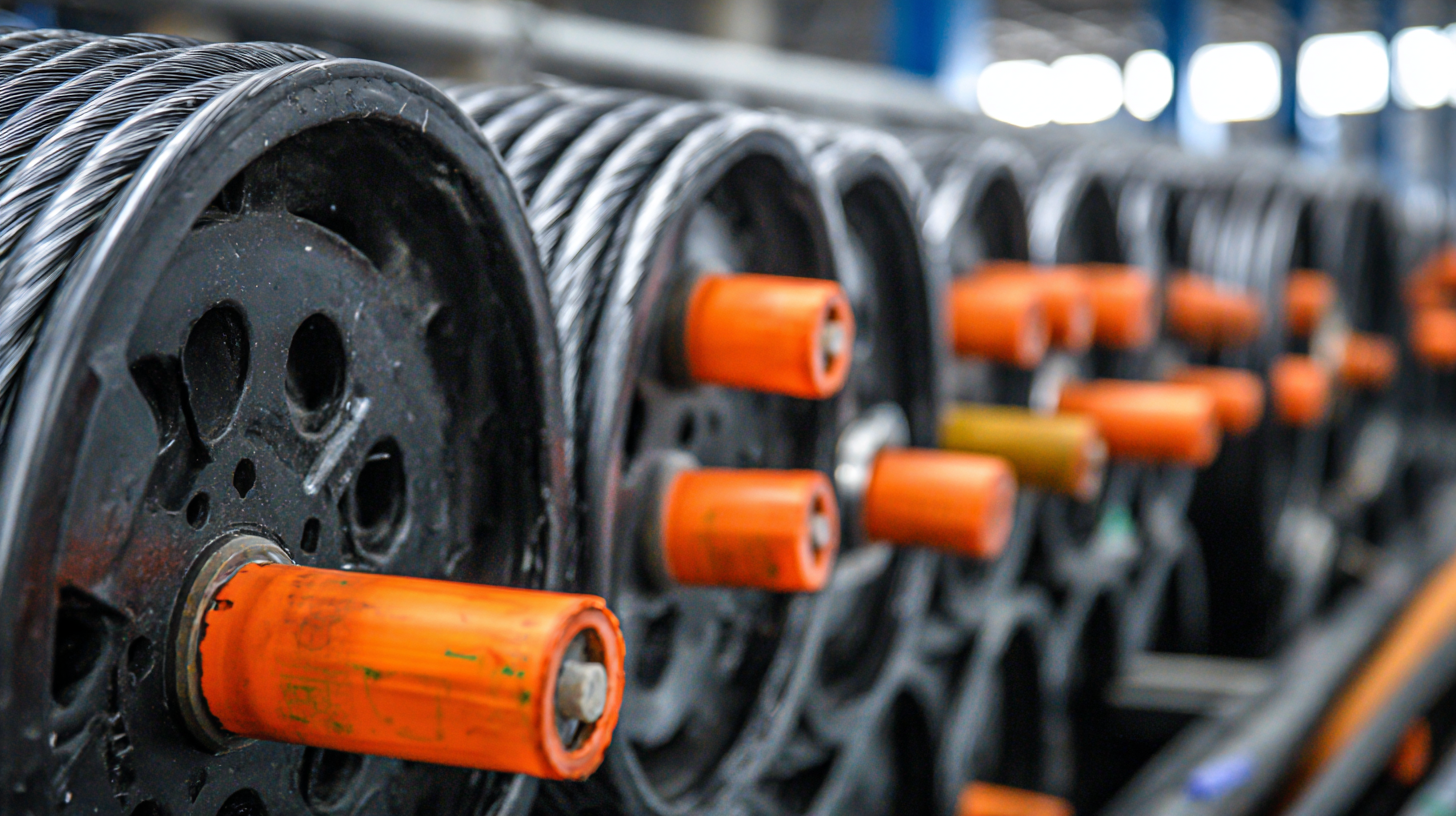Navigating Industry Production Standards Challenges for Best Medium Voltage Cable
As the demand for reliable electrical infrastructure continues to rise globally, the significance of high-quality Medium Voltage Cables (MVC) cannot be overstated. According to a recent report by MarketsandMarkets, the medium voltage cable market is projected to grow from USD 36.5 billion in 2020 to USD 52.4 billion by 2025, reflecting a compound annual growth rate (CAGR) of 7.7%. This growth is propelled by increasing investments in renewable energy and expanding urbanization, particularly in developing economies. However, navigating the challenges associated with industry production standards is crucial for manufacturers aiming to lead in this competitive landscape.

As China establishes itself as a powerhouse in global manufacturing, it is essential to explore how its advanced capabilities in producing MVC can meet international standards while addressing the unique challenges posed by varying regulations and technological advancements. This blog will delve into the current obstacles faced in the medium voltage cable sector and highlight strategies for overcoming these challenges to ensure superior product quality and compliance.
Understanding Medium Voltage Cable Standards and Regulations
When diving into the world of medium voltage cables, understanding the various standards and regulations governing their production is crucial. These standards are designed to ensure safety, reliability, and performance in electrical systems. Different regions may have specific regulations, such as the IEC standards in Europe or the ANSI standards in the United States. Familiarizing yourself with these guidelines not only helps in compliance but also enhances the longevity and efficiency of the cables.
**Tip:** Always verify that the medium voltage cables you choose are certified to meet relevant national and international standards. This will help you avoid potential failures and maintain operational integrity.
In addition, being aware of the testing methods associated with medium voltage cables is essential. Compliance testing, including insulation resistance and partial discharge tests, ensures that the cables will perform under expected load conditions without failure. Understanding these procedures can provide peace of mind and enhance project reliability.
**Tip:** Consult with manufacturers about their testing protocols and documentation. This transparency helps ensure that the cables meet high-quality benchmarks, ultimately safeguarding your electrical systems.
Navigating Industry Production Standards Challenges for Best Medium Voltage Cable
This chart illustrates the key characteristics of medium voltage cables, including voltage rating (in kV), current rating (in A), insulation type (on a scale), and compliance with industry standards (number of standards). Understanding these factors is crucial in navigating the challenges associated with industry production standards.
Key Challenges in Meeting Industry Production Standards
Meeting industry production standards for medium voltage cables is a multifaceted challenge that manufacturers face in today’s competitive landscape. One key challenge is ensuring compliance with various international standards, such as IEC 60502 and IEEE 48, which set stringent requirements for performance and safety. According to a market analysis report by Research and Markets, over 30% of medium voltage cable manufacturers reported difficulties in achieving these standards due to varying national regulations and technical specifications.
Another critical hurdle lies in the adoption of advanced materials and manufacturing technologies. The latest advancements, such as cross-linked polyethylene (XLPE) insulation, significantly enhance cable performance; however, they require substantial investment and expertise to implement effectively. A report by Technavio highlights that around 25% of manufacturers struggle with integrating these new technologies into their existing production lines, which affects their ability to meet market demands and timelines. Addressing these challenges not only impacts operational efficiency but also poses risks in delivering reliable and safe electrical systems.
Navigating Industry Production Standards Challenges for Best Medium Voltage Cable - Key Challenges in Meeting Industry Production Standards
| Challenge | Description | Impact on Production | Potential Solutions |
|---|---|---|---|
| Compliance with Standards | Difficulty in adhering to numerous and frequently changing industry standards. | Delays in production and increased costs. | Regular training and updates on standards. |
| Material Sourcing | Challenges in sourcing high-quality materials that meet standards. | Inconsistent product quality and reliability. | Building strong relationships with trusted suppliers. |
| Testing and Certification | Ensuring that products undergo rigorous testing and certification processes. | Potential for product recalls and reputation damage. | Investing in comprehensive testing facilities. |
| Technological Changes | Keeping up with rapid technological advancements in cable manufacturing. | Risk of obsolescence and losing competitive edge. | Continuous research and development investments. |
| Environmental Regulations | Increasing demand for environmentally friendly manufacturing processes. | Higher operational costs and potential fines. | Implementing sustainable practices and materials. |
Best Practices for Ensuring Quality and Compliance
When it comes to medium voltage cables, ensuring quality and compliance with industry production standards is paramount. One of the best practices in this regard is implementing a rigorous testing framework throughout the manufacturing process. This includes routine checks for insulation integrity, thermal stability, and electrical performance under varying conditions. By adhering to these testing protocols, manufacturers can identify potential failures early, reducing the risk of costly downtime and enhancing the overall reliability of the cables.

Innovative Solutions to Overcome Production Challenges
The production of medium voltage cables has come under increasing scrutiny due to evolving industry standards that aim to enhance safety and performance. According to a recent report by MarketsandMarkets, the global medium voltage cable market is projected to reach $24.6 billion by 2026, highlighting the growing demand for reliable and efficient power distribution solutions. However, manufacturers face significant challenges, including the need to comply with strict regulatory requirements and adapt to advanced material technologies while maintaining cost-effectiveness.
Innovative solutions are essential for tackling these production challenges. One such approach is the adoption of smart manufacturing technologies, which integrate Internet of Things (IoT) devices and data analytics into the production process. A study from the International Council on Large Electric Systems indicates that implementing IoT in cable production can reduce operational costs by up to 30%, while also improving overall product quality. Additionally, advancements in materials science, such as the development of cross-linked polyethylene (XLPE), enhance the insulation and temperature resistance of cables, enabling manufacturers to meet stringent performance standards effectively. Embracing these innovations not only streamlines production but also positions companies to thrive in a competitive market.

Future Trends in Medium Voltage Cable Manufacturing Standards
As the demand for reliable and efficient medium voltage cables grows, manufacturers face evolving production standards that dictate quality and safety. To stay ahead in this competitive landscape, companies must adapt to emerging trends in manufacturing standards. A focus on sustainability is becoming paramount, with an increasing shift towards eco-friendly materials and processes. Emphasizing the circular economy can help manufacturers not only meet regulatory demands but also attract environmentally conscious customers.
Tip: Invest in research and development to identify sustainable materials that do not compromise on quality. Collaborating with suppliers who prioritize eco-friendliness can streamline this transformation.
Another trend is the integration of smart technology into cable systems. This innovation allows for real-time monitoring, which enhances safety and optimizes maintenance schedules. As the Internet of Things (IoT) continues to permeate the manufacturing sector, medium voltage cables embedded with sensors are becoming more common. Manufacturers that embrace these technologies will likely see improvements in efficiency and customer satisfaction.
Tip: Consider partnering with technology firms to develop or incorporate smart cable solutions that can future-proof your products while meeting modern market needs.
